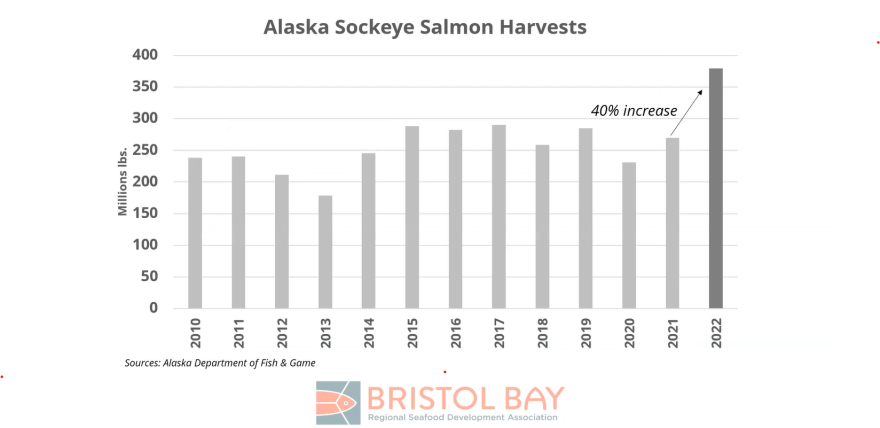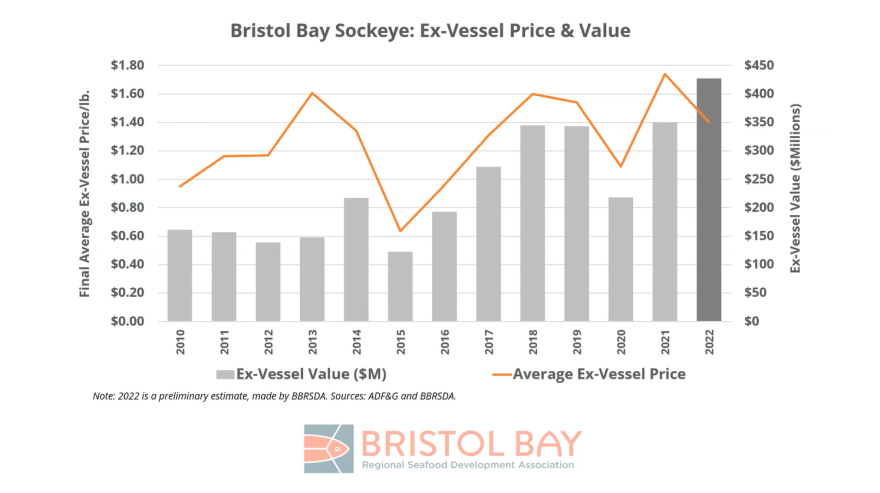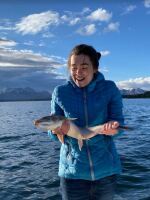Bristol Bay saw a record-breaking harvest of more than 60 million sockeye last summer. The fishery provided roughly two-thirds of the global sockeye supply. It also made up most of the state’s largest harvest on record, which was up 40% from the year before.
“That's a lot more fish to sell through the system,” said Bristol Bay Regional Seafood Development Association’s executive director, Andy Wink, at a virtual presentation on market conditions earlier this month.
The huge volume of sockeye from 2022 means companies are still selling off those fish, which has tamped down this year’s market, and some processors are still waiting for money from last year’s harvest.
“That big harvest from 2022 needs to sell to create working capital for 2023,” Wink said. “What's left of it is just a cost, right? It costs money to continue to finance it, costs money to store it and ship it and all the things.”

Some factors are in favor of a healthy market, Wink said, like a strong customer base, increased enthusiasm for fish and a lower forecast for Bristol Bay’s upcoming sockeye season. But that isn’t draining the excess stock fast enough.
Bristol Bay produced at least 100 million pounds more sockeye last season than the six-year average, and fish were also shipped to other parts of the state for processing. Ex-vessel prices were about $100 million higher as well, which means more money for the fleet. But wholesale prices have dropped, between the surplus of fish and lower consumer spending due to inflation, and the rate at which sockeye are sold at market is actually slower than in 2021.
Sales of last year’s fish may end up competing with the upcoming summer’s catch and continue to depress wholesale prices.
“I think the big question is, will they come back up? And if so to what degree?” Wink said. “And I think a lot of that's going to have to do with how much of this pack isn't necessarily just sold to the first wholesale level but how much of it is consumed and totally cleared out of the market.”
Meanwhile, costs have inflated for consumers, fishermen and processors.
“Higher interest rates kind of increases carrying cost, increases financing costs. Labor costs more,” Wink said. “Supply chain costs for shipping, for storage, especially, are up. Insurance is up quite a bit.”
It's not all bad news for the industry. While less salmon has sold as prices rose over the past year, Wink said sales trends are strong and sockeye is still a popular fish. The U.S. dollar has also gotten weaker over the past six months, which is good for selling fish to other countries. And although last year’s price per pound was down, Wink said the final ex-vessel value will likely be around $420 million thanks to the enormous volume of the catch.
“Supply and lower prices do create future demand,” he said. “So I think we’ll benefit from that in the longer term.”
As for what fishermen may get paid this summer, Wink said there’s no benefit to guessing, and he encouraged them to talk to their processors.

Disclaimer: The Bristol Bay Regional Seafood Development Association provides funding to KDLG’s Bristol Bay Fisheries Report, but it does not influence or direct our coverage.
Get in touch with the author at izzy@kdlg.org or 907-842-2200.





